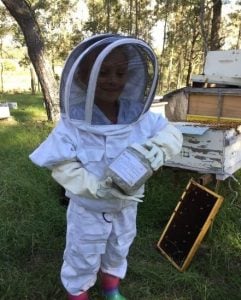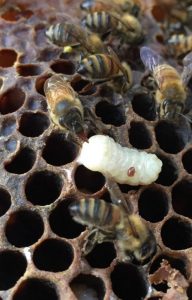Australian honey industry at risk from exotic mites
The majority of Australian beekeepers are completely unskilled and unprepared should mites arrive to our shores and start impacting our bees.
All around the world, the best performing and most profitable beekeepers are always those that undertake a lot of mite surveillance on their hives. They know this management tool is important to the health of both their operation and bottom line. Australia lags way behind any other nation in this regard.
If an exotic mite becomes established in Australia, then all beekeepers will need to undertake a lot more work (and spend more money) to manage their colonies and keep them viable.
The mites are parasitic and feed on developing brood which directly impacts the future health and viability of that hive. If not managed then hive losses increase dramatically and honey production is severely reduced. We all need to work hard now to try to protect our industry from this threat by starting to look for them now.

Image 1: Sugar shaking is easy on the bees (and kids love it)
Consider the following tips when checking for mites.
Image courtesy Rod Bourke
Australia is lucky to currently enjoy freedom from both varroa and tropilaelaps mites which are the major mites that impact the rest of the world. But if either of these were to arrive then beekeepers will play a big role in their early detection as well as mapping their established range. Alert beekeepers mean we can quickly implement an effective containment and eradication program.
In most states, including NSW, beekeepers are already required to undertake exotic mite surveillance as part of their obligations under the Australian Honey Bee Industry Biosecurity Code of Practice (the Code). The main problem is that many beekeepers aren’t following the Code and are not looking for exotic mites.
Autumn is time to check brood and look for mites
Autumn is New South Wales Department of Primary Industry’s Sugar Shake season, which is a timely reminder to complete your autumn brood checks and mite surveillance. Take note of the weather in your region and schedule your final brood inspections of the season before it gets too cold. You can do mite checks at any time of the season, but to correctly follow section 3.2 of the Code they need to be spaced 4 months apart, so generally doing them with your spring and autumn brood checks is good timing.

Image 2: Uncapped drone brood with varoa
Image courtesy Rod Bourke
- Sugar shaking (Image 1) does not generally harm bees and is reasonably effective in removing most of the mites off bees. This is probably the best method for most recreational beekeepers to use.
- Alcohol washing is a little bit more effective at removing mites than sugar shaking and is considered the most accurate of the two methods, but it kills all bees used in the process (so ensure the queen isn’t in with those bees).
- Drone uncapping (preferably of pink eyed drone pupae) is an effective process when hives are rearing drone brood (depending on your location this can be quite seasonal). Drone pupae are often the preferred varroa breeding sites in a colony (especially in spring) and pigmented baby varroa and the adults are very easy to spot (Image 2).
At the end of the day, the really important thing for all beekeepers (large and small) to remember is that ALL beekeepers should be routinely undertaking exotic mite surveillance upon their hives.
Acknowledgements:
- This article was peer-reviewed by Mark Page and Nadine Chapman.



One Trackback
[…] Mite inspections can be performed in one of three ways, sugar shake testing being one. Conduct your sugar shake test this autumn and fulfil your inspection obligations. […]